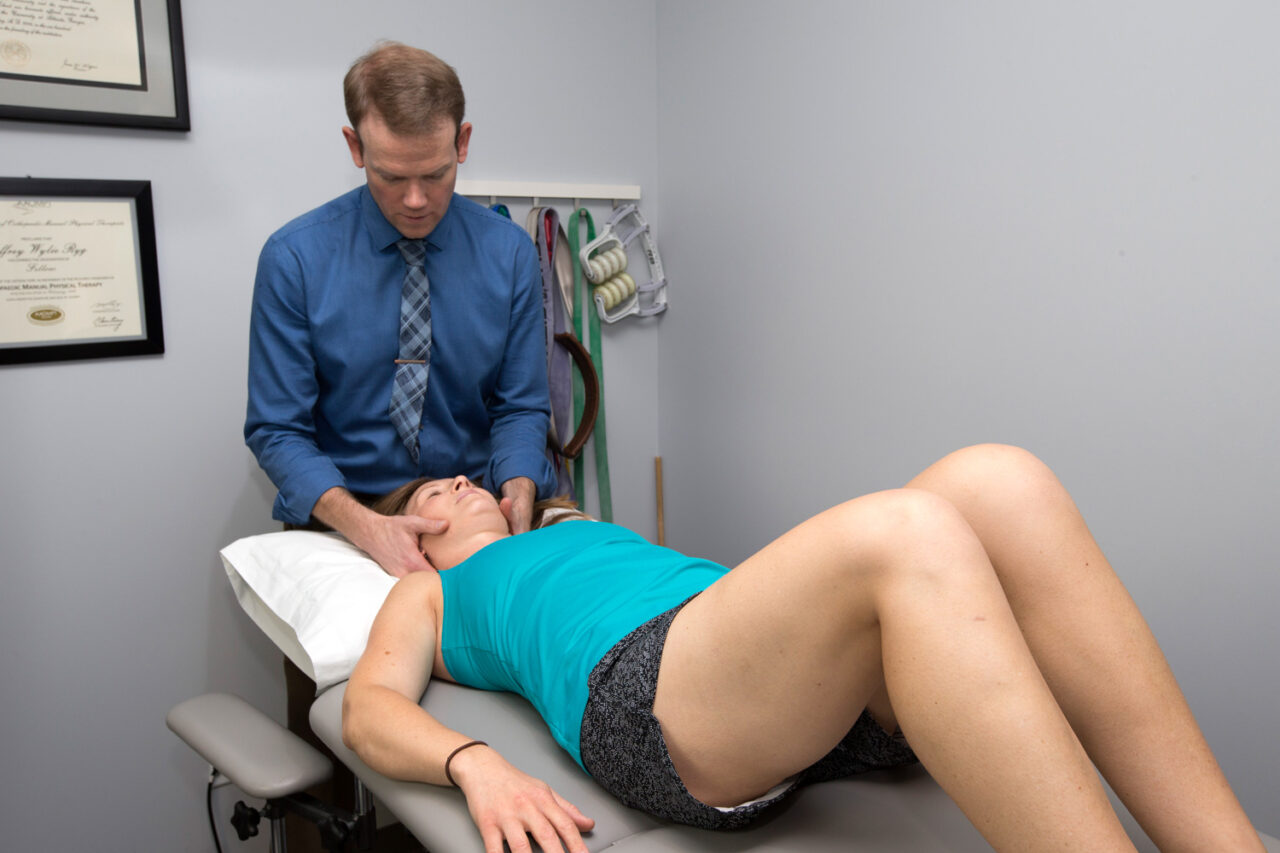Waking up with a stiff neck or struggling through the day with persistent neck pain can be incredibly frustrating, not to mention disruptive to your daily schedule. If you can’t even turn your head without wincing in pain, even simple tasks like driving to the grocery store become monumental hurdles.
Naturally, the best way to relieve neck pain depends on the underlying cause of the discomfort. If you fly a lot, for example, you’re undoubtedly familiar with reaching for your luggage in the overhead bin only to freeze when a shooting pain radiates down your shoulder. When a stiff neck is the result of something as simple as sleeping in an uncomfortable position, the pain may resolve itself in a day or two. If, on the other hand, it persists, you may find yourself heading to Google and searching for “the best physical therapy for neck pain near me.”
If this happens to be the situation you’re in, you are not alone. Neck pain is one of the most common reasons why patients seek care from their primary care physician or Physical Therapist. At our Boulder and Lafayette physical therapy clinics, we offer neck therapy solutions tailored to your specific needs. We have found the most effective and efficient treatments include dry needling or manual therapy coupled with high-level exercise and education. If you’re wondering which approach is best for you, here’s what you should know.
Understanding Myofascial Pain
To achieve lasting relief, it’s important to determine why your neck pain started in the first place and what you can do to prevent it from recurring in the future. In most cases, the underlying issue is muscle-related and is considered myofascial pain.
Myofascial pain is a chronic pain disorder that affects the muscles and the sheaths of tissue, called the fascia, that surrounds them. This condition is characterized by the presence of sensitive points in your muscles, known as trigger points. These trigger points can cause pain in the muscle and sometimes in seemingly unrelated parts of your body, a phenomenon known as referred pain. The pain can be persistent and is often described as a deep, aching sensation that limits movement and functionality.
Dry Needling for Neck Pain
Myofascial pain can be treated with dry needling by Physical Therapists and is often combined with other proven interventions such as exercise. Dry needling involves inserting fine needles into the trigger points to relieve pain and improve muscle function. This technique helps release the tension in the muscles and fascia, promoting healing and reducing discomfort.
Combining dry needling with spinal manipulation can further alleviate pain by restoring proper alignment and mobility to the spine. Additionally, targeted exercises strengthen the surrounding muscles, support recovery, and prevent future episodes of pain.
Manual Therapy for Neck Pain
Manual therapy is a hands-on treatment approach used by physical therapists to alleviate neck pain. It involves a variety of movements and pressures applied to the muscles, joints, and soft tissues to reduce pain, improve mobility, and enhance overall function.
Manual therapy can be particularly effective for treating myofascial pain by addressing trigger points and improving blood flow to the affected areas. When combined with exercises to strengthen and stabilize the neck and shoulder muscles, manual therapy can provide comprehensive relief and help prevent future pain.
Dry Needling Vs. Manual Therapy for Neck Pain
A recent study explored the effectiveness of manual therapy versus dry needling, both combined with exercise, for treating patients with neck pain. Pandya and colleagues conducted research published in the Journal of Orthopedic and Sports Physical Therapy in 2024. They investigated the outcomes of these two interventions in a group of 78 patients with an average age of 51 years.
Participants were randomly assigned to either the dry needling and exercise group or the manual therapy and exercise group. Each patient received spinal manipulation to the mid back and spinal mobilizations to the neck. Those in the dry needling group received needling to the posterior muscles of the neck and mid-back. All participants performed strengthening exercises for the neck and shoulder blades, along with mobility exercises for the neck. Each patient attended seven treatment sessions over a six-week period. The results showed improvements in both groups, but those receiving manual therapy and exercise experienced greater benefits at the end of the six weeks and at a three-month follow-up.
Get the Best Treatment for Your Neck Pain Today
Neck pain can significantly impact your quality of life, but effective treatments are within reach. Whether you’re struggling with a stiff neck or chronic discomfort, understanding your options is the first step toward relief.
At Mend, we offer both dry needling and manual therapy combined with personalized exercise programs to address your unique needs and help you achieve lasting pain relief.
If you’re ready to take control of your neck pain and improve your overall well-being, don’t wait any longer. Contact Mend today to schedule an appointment at our Boulder or Lafayette clinics. Our expert physical therapists are here to provide the best physical therapy for neck pain and guide you on your path to recovery.

